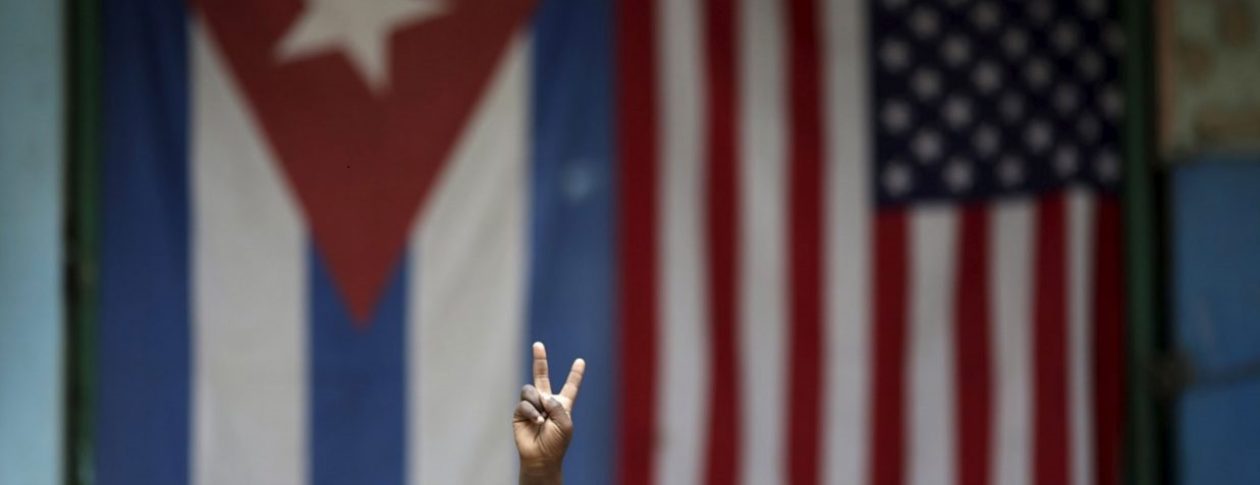Korda’s militia woman
The story of Idolka Sánchez, the militia face immortalized by Korda’s lens in 1962, one of the millions of women protagonists of the Cuban Revolution
Author: Alejandra García | internet@granma.cu
march 6, 2019 13:03:06
La Miliciana. Photo: Korda, Alberto
Among the crowd that May Day, 1962, a young photographer focused on the adolescent face of Idolka Sánchez, as she marched in front of the José Martí Memorial in Havana.
One of the almost 2,000 members of the Lidia Doce women’s militia battalion, Idolka saw him approach, camera in hand. He appeared as if hell bent on photographing her, as if he had seen her from a distance and couldn’t let her escape his lens. He had chosen her.
“Lift up the machine gun!” the man she had barely heard of ordered. This was the same photographer who, in March 1960, had immortalized Che’s face, hair blowing in the wind, during the funeral of the victims of the terrorist attack on the La Coubre steamship. The order was followed by several clicks of his camera and, in a matter of seconds, Korda had disappeared.
Idolka had already forgotten the incident when the photographer reappeared, that same morning. Korda wanted to take two more shots of her. He didn’t just want to capture a face or an image. He was seeking a symbol, and he found it. The following day, the photo was seen across the island, on the front page of the newspaper Revolución.
“I can’t explain what it felt like. It wasn’t vanity, but eternal gratitude. I never imagined the significance of that image,” Idolka Sánchez Moreno told Granma International.
Fifty-six years after that encounter with Korda, the image known as La Miliciana (The Militia Woman) endures. The sun on her face, the stern gaze focused on the horizon, the rifle at her side, pointing to the sky, the tilted beret…
“I never imagined the significance of that image,” Idolka confessed.
Photo: Jose M. Correa
Today Idolka preserves the beauty of that 22-year-old, captured in the early, intense years of the Revolution. “I will never forget that it was a beautiful, clear morning, similar to today. I didn’t expect to catch the attention of any photographer, surrounded by so many other women. My main interest that day was the opportunity to parade before Comandante en Jefe Fidel Castro Ruz,” she explained.
Years would pass before Idolka and Korda met again, after La Miliciana had become an iconic image and appeared on placards, postcards, in photographic exhibitions, and on the walls of workplaces and embassies. Few know the woman behind the image.
“I remember one day, walking to work with my sister, a woman saw La Miliciana hanging in a window. She was just a few steps from us, but unaware that we could hear her, she said: ‘Look at that, I bet she’s left the country already and they have her all over the place.’ My sister confronted her, but eventually we decided to continue on our way.”
Idolka joined the Militia as soon as it was created. “I came from a family that supported every step of the revolutionaries in the Sierra Maestra, in the eastern part of the island, and my destiny could be no other. I studied Law at university, I have dedicated my life to my country, and today my two children are photographers,” she noted.
Idolka with Korda, in a reunion organized by Muchacha magazine.
Photo: Courtesy of the interviewee.
Almost two decades after that May Day, in 1981 she met Korda again. The Muchacha magazine organized a reunion between the photographer and “La Miliciana.”
“It was very moving, but I never expected any recognition. It was his work. I was just a chance model, discovered in the midst of a parade, one of so many other young women who proudly wore the most beautiful of uniforms, that of the militia.”
Regarding that encounter in the Plaza de la Revolución, May Day 1962, Korda once recalled, “I had spent hours looking among the crowd through my camera. The Lidia Doce women’s battalion caught my attention and I took many shots. But, on developing them, only one truly stood out: the militiawoman with the rifle held high and such determination in her gaze that I said to myself: this is the Cuban warrior, the woman who defends the homeland.”
Alberto Díaz Gutiérrez, better known as Alberto Korda (September 14, 1928 – May 25, 2001), is one of the all-time greats of photography, with works that form part of the symbolic imagery of the Cuban Revolution.
La Miliciana, that instant that captured the purity and strength of women in an exceptional moment of national history, was one of his most beloved portraits. “It’s a photo that will outlive us,” Korda stressed, “Future generations will admire our eternally young militiawoman.” And so it was.



